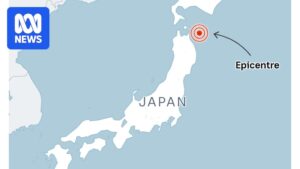
Researchers have achieved a breakthrough in solar physics by providing the first direct evidence of small-scale torsional Alfvén waves in the Sun’s corona. These elusive magnetic waves, sought after since the 1940s, were observed using the U.S. National Science Foundation’s (NSF) Daniel K. Inouye Solar Telescope in Hawaii. The findings, published in Nature Astronomy, could explain why the Sun’s outer atmosphere, the corona, reaches temperatures of millions of degrees while its surface remains around 5,500°C.
Alfvén waves, named after Nobel Prize winner Hannes Alfvén who predicted their existence in 1942, are magnetic disturbances that transport energy through plasma. Although larger versions of these waves have been linked to solar flares, this marks the first direct observation of the smaller, persistent twisting type that could power the Sun.
Unveiling the Sun’s Hidden Dynamics
Professor Richard Morton, a UKRI Future Leader Fellow at Northumbria University, led the research. He expressed the significance of this discovery, stating, “This discovery ends a protracted search for these waves that has its origins in the 1940s. We’ve finally been able to directly observe these torsional motions twisting the magnetic field lines back and forth in the corona.”
The breakthrough was facilitated by the Daniel K. Inouye Solar Telescope’s Cryogenic Near Infrared Spectropolarimeter (Cryo-NIRSP), a cutting-edge instrument capable of detecting fine details in the corona and sensitive to plasma movement. With its four-meter-wide mirror, the telescope represents two decades of international collaboration and development.
Technological Advancements and Analytical Techniques
Northumbria University played a crucial role in the telescope’s development, contributing to the design of its Visible Broadband Imager. Professor Morton utilized the telescope to track the movement of iron heated to 1.6 million degrees Celsius in the corona. By developing new analytical techniques, he was able to distinguish the torsional wave motions from the dominant swaying motions of plasma.
Unlike the more familiar ‘kink’ waves, which cause entire magnetic structures to sway visibly, the newly detected torsional Alfvén waves induce a twisting motion detectable only through spectroscopic analysis. This involves measuring plasma movement towards and away from Earth, resulting in characteristic red and blue shifts on opposite sides of magnetic structures.
Implications for Solar and Space Weather Understanding
The discovery has profound implications for understanding solar dynamics. The corona, visible during solar eclipses, is heated to over one million degrees Celsius, enabling plasma acceleration away from the Sun as solar wind. This research represents a major international collaboration, involving institutions such as Peking University, KU Leuven, and the NSF National Solar Observatory.
Understanding these processes is crucial for space weather prediction. The solar wind’s magnetic disturbances can disrupt satellite communications, GPS systems, and power grids on Earth. Alfvén waves may also be the source of ‘magnetic switchbacks,’ significant energy carriers in the solar wind observed by NASA’s Parker Solar Probe.
“This research provides essential validation for the range of theoretical models that describe how Alfvén wave turbulence powers the solar atmosphere,” added Professor Morton. “Having direct observations finally allows us to test these models against reality.”
The team anticipates further investigations into wave propagation and energy dissipation in the corona. The capabilities of the Cryo-NIRSP instrument open new possibilities for studying wave physics in the solar atmosphere.
Ongoing Research and Future Prospects
Supported by UKRI Future Leaders Fellowships, the National Natural Science Foundation of China, and the European Union’s Horizon Europe programme, this is the third paper by Professor Morton on Alfvén waves this year. His previous works include publications in The Astrophysical Journal and The Astrophysical Journal Letters.
For more information, the paper Evidence for small-scale torsional Alfvén waves in the solar corona was published in Nature Astronomy on XX October 2025. DOI: 10.1038/s41550-025-02690-9. Visit the Northumbria University Research Portal to learn more about Professor Morton’s work.
Related News
- Northumbria to help build world’s biggest solar telescope in £220 million project
- Researchers find evidence for a new fundamental constant of the Sun
- Global magnetic field of the solar corona measured for the first time
- £1.2 million awarded to improve our understanding of the Sun
- Recognition for Northumbria physicist’s solar discoveries
- First successful routine measurements of Sun’s magnetic field in the corona






